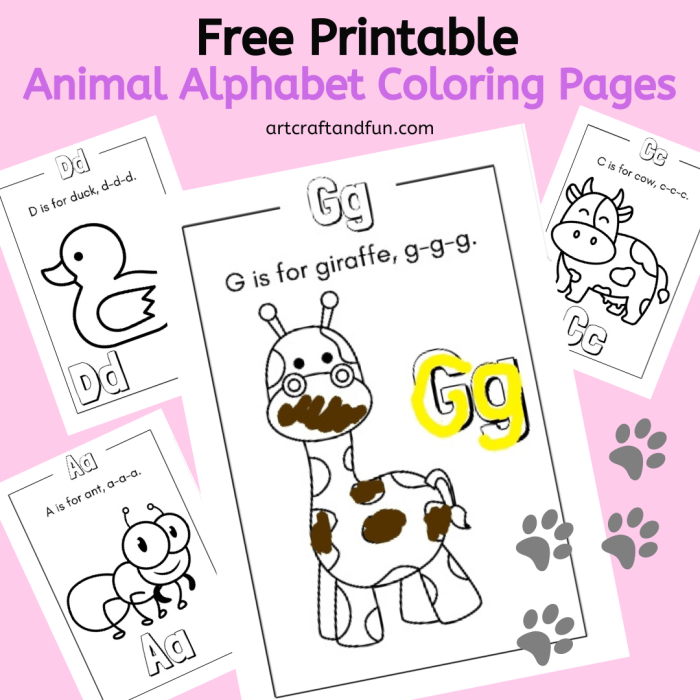Coloring Pages Alphabet Animals
Target Audience Analysis: Coloring Pages Alphabet Animals

Coloring pages alphabet animals – The primary audience for alphabet animal coloring pages encompasses young children, typically within a specific developmental window. Understanding this target audience’s age range, interests, and learning styles is crucial for maximizing the effectiveness and appeal of these educational resources.The design and content of alphabet animal coloring pages must cater to the cognitive and emotional needs of the intended users.
This requires a detailed analysis of their developmental characteristics and preferred learning methods. Ignoring these factors can lead to a product that fails to resonate with its target market.
Age Range
The ideal age range for alphabet animal coloring pages is generally between the ages of 2 and 6 years old. Children in this age group are developing fine motor skills, hand-eye coordination, and pre-reading abilities. The simple designs and repetitive nature of alphabet-based activities make them ideal for reinforcing early literacy skills. While older children might find the task too simplistic, younger children may not yet possess the necessary dexterity.
This age range provides the optimal balance between developmental readiness and engagement.
Key Interests and Developmental Stages, Coloring pages alphabet animals
Children aged 2-6 are typically in the preoperational stage of cognitive development (according to Piaget’s theory), characterized by symbolic thinking and imaginative play. They are fascinated by animals and enjoy activities that involve creativity and self-expression. Coloring pages featuring animals, especially those connected to the alphabet, offer a fun way to engage these interests while reinforcing letter recognition and vocabulary.
The act of coloring itself fosters fine motor skills, hand-eye coordination, and concentration. Furthermore, the completion of a coloring page can boost self-esteem and provide a sense of accomplishment. For example, a child successfully coloring a lion while learning the letter “L” experiences both artistic and educational achievement.
Preferred Learning Styles
Young children in this age group predominantly learn through kinesthetic and visual learning styles. Kinesthetic learning involves hands-on activities, making coloring pages an ideal tool. The act of physically coloring the pages engages their senses and reinforces learning. Visual learning relies on seeing and observing, and the vibrant colors and engaging animal imagery in the coloring pages strongly cater to this style.
The combination of visual stimuli and physical activity makes the learning process more enjoyable and effective. Many studies have demonstrated the effectiveness of multi-sensory learning in early childhood education, further supporting the use of coloring pages as a valuable educational resource. For instance, research has shown that children who engage in hands-on activities retain information better than those who passively receive it.
Coloring pages featuring alphabet animals offer a fun way for kids to learn letters while expressing their creativity. For a slightly different artistic experience, check out these cute anime coloring pages which offer a unique style and level of detail. Returning to the alphabet animals, these pages provide a simpler, foundational approach to coloring and letter recognition, perfect for younger children.



